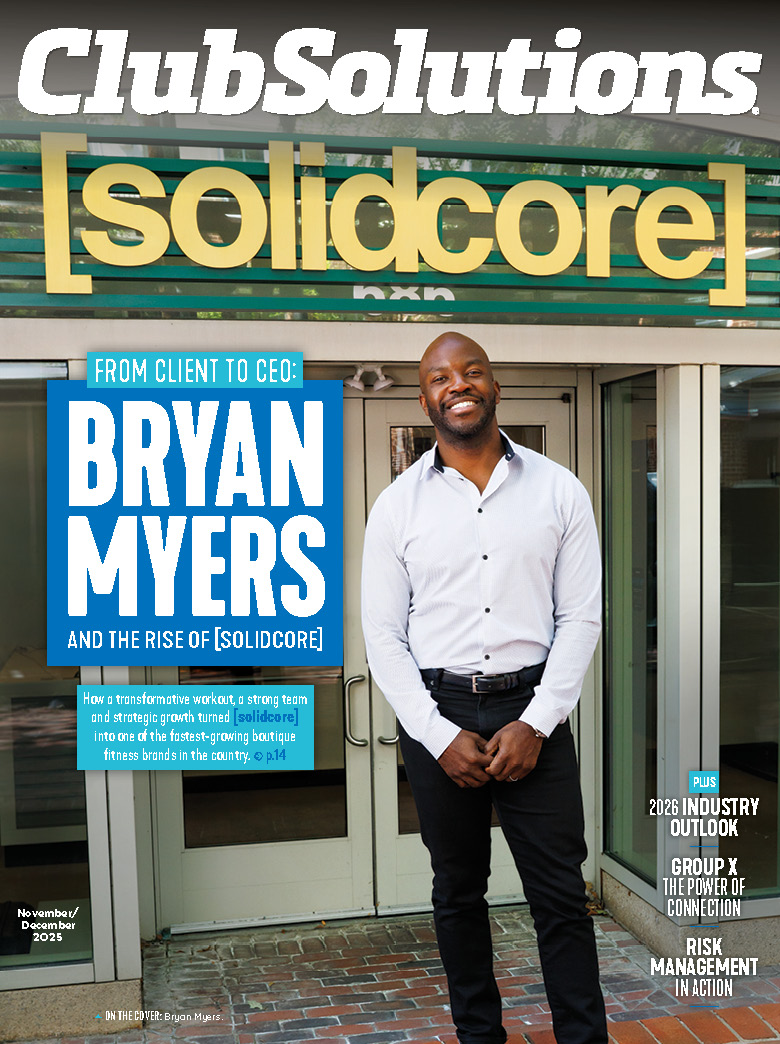What happens when your health club retail establishment is forced to shut down during COVID-19? That’s exactly the situation our pro shop, The Coop, found itself in. Once COVID-19 hit, the lifeline of regular foot traffic within our facility came to a screeching halt. One factor in our favor was our retail shop could remain open while Cooper Fitness Center remained closed. At the time, the public was under a “shelter in place” order and the level of concern was high. The evolution of the customers’ emotions and immediate needs far outweighed their health club retail desires.
However, with some intuitive business adaptations, The Coop was still able to not only meet the needs of its customers, but also produce revenue for the club.
Business Practices, Operations and Strategy Shifts
In Texas, many businesses reopened before the rest of the country, so we were left to create our own cleaning and safety protocols. Once cleaning procedures were established we identified ways to adapt quickly to remain relevant and profitable.
Retail Inventory Levels
Without regular foot traffic, we had to quickly assess how many people we could reach through Instagram (IG) during the closure. We used the percentage of engagement on our IG account to help us estimate the percentage of inventory. Once our fitness center reopened, we began to assess the number and type of members returning to the club to help determine items that match their interests and needs.
Communication With Vendors
With this new inventory measuring stick, we began reaching out to vendors, asking to adjust previously placed orders. We explained our location limitation, prompting many vendors to work with us by allowing cancelled orders or credits issued. If neither option was acceptable, we requested orders be pushed back until the rest of the business had stabilized. Although it was a bit nerve-racking having inventory come in too late for a particular season, it actually ended up working in our favor, as many lines did not go into production as the pandemic continued.
Safe Bets
We quickly learned inventory selections needed to reflect the times and current needs of our consumers. Not surprisingly, the areas of demand increased in workout apparel and equipment — golf, tennis and swim — and casual wear. Actually, our top-producing category of contemporary apparel was the least desired and the highest risk due to the seasonality of trends.
Innovative Health Club Retail Experiences
During this time, our customers missed social connections outside of their homes, so we took this opportunity to create safe, memorable health club retail experiences with The Coop.
Online Sales Without E-commerce Space
IG quickly became our new e-commerce space and social community. Once we had inventory matched to the needs of our consumers, it was up to us to connect the dots for them — for example casual apparel for an essential store run or Zoom call, or tennis apparel for playing a safe, physically-distanced sport.
Private Shopping Hours: Virtual and In-person
With shoppers not feeling comfortable during regular hours, our retail manager offered private shopping appointments during select times, virtual or in-person.
Online Trunk Shows
Trunk shows are a low risk endeavor for health club retailers since the only inventory a store is responsible for purchasing is the inventory actually sold. Vendors were more than willing to work with us, allowing new lines to be introduced with little to no financial risk to the company. Our retail manager used Instagram TV (IGTV) to record events and many lines let us keep inventory longer to allow time for sales to occur once the video was posted.
Partnerships
As a family-owned company, the opportunity to shop local to show community support was an easy decision. We offered special trunk shows, virtual and in-person, hosted by local designers. Our customers loved the exclusivity of meeting the designers — yet another reason to shop.
With increased traffic on our outdoor tennis courts, we capitalized on this demographic by offering exclusive discounts to capture them as buyers, or even bring the sale to them outdoors.
As our professional fitness trainers began training virtually, they quickly became equipment resources for their clients. Our store is small with limited storage so we partnered with Power Systems, allowing our customers to order equipment we didn’t carry. We received a small percentage of the sales without the hassle of fulfillment, shipping or inventory. With no risk, this partnership allowed us to get customers what they needed.
During these challenging times, it’s critical to remain nimble and adapt your operational strategy on a daily basis with an eye on the future. Riding the complex waves of consumers’ comfort levels during COVID-19 is enough to make any club operator feel seasick. From closure to reopening, meet your customers where they are in each phase of the pandemic to remain profitable.
Stay ahead in the fitness industry with exclusive updates!
Meredith Rosson is the assistant general manager of Cooper Fitness Center, a 50,000-square-foot lifestyle, wellness and fitness facility located in Dallas, Texas. Meredith studied Exercise Physiology at University of Texas at Austin and has held integral leadership roles that have developed success in more than 13 departments since 2006. She is a member of The Women in Fitness Association and a former personal trainer. She can be reached at: mrosson@cooperfitnesscenter.com.











